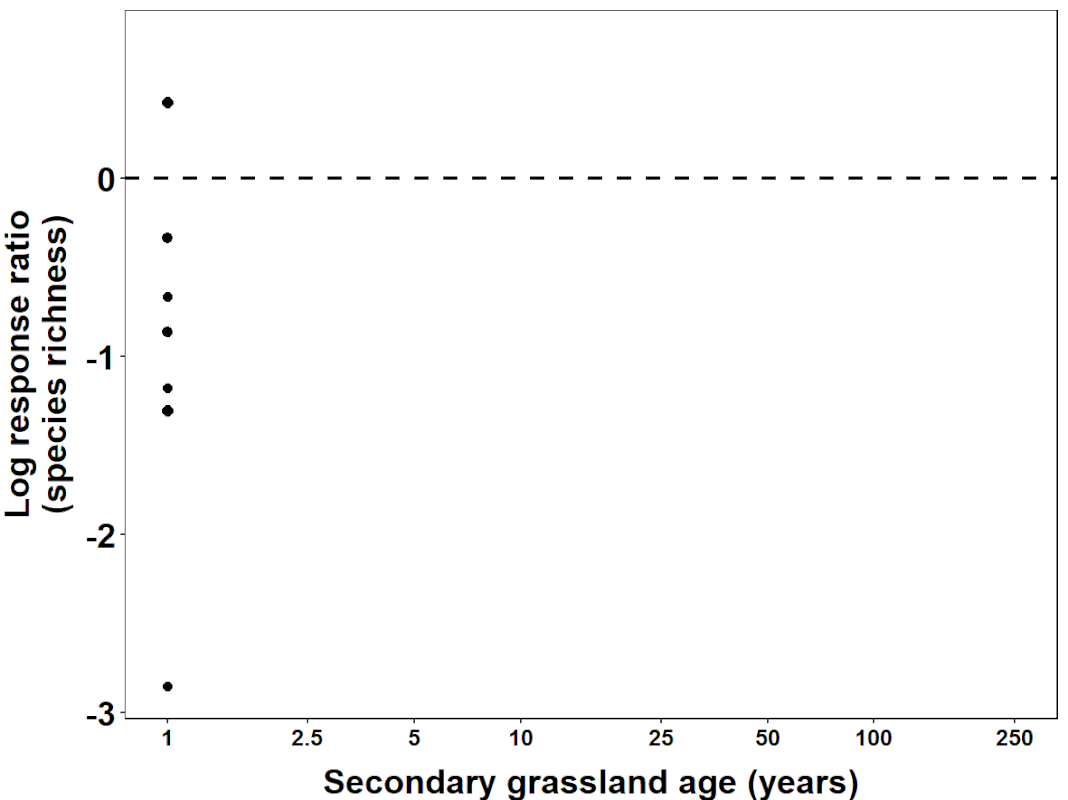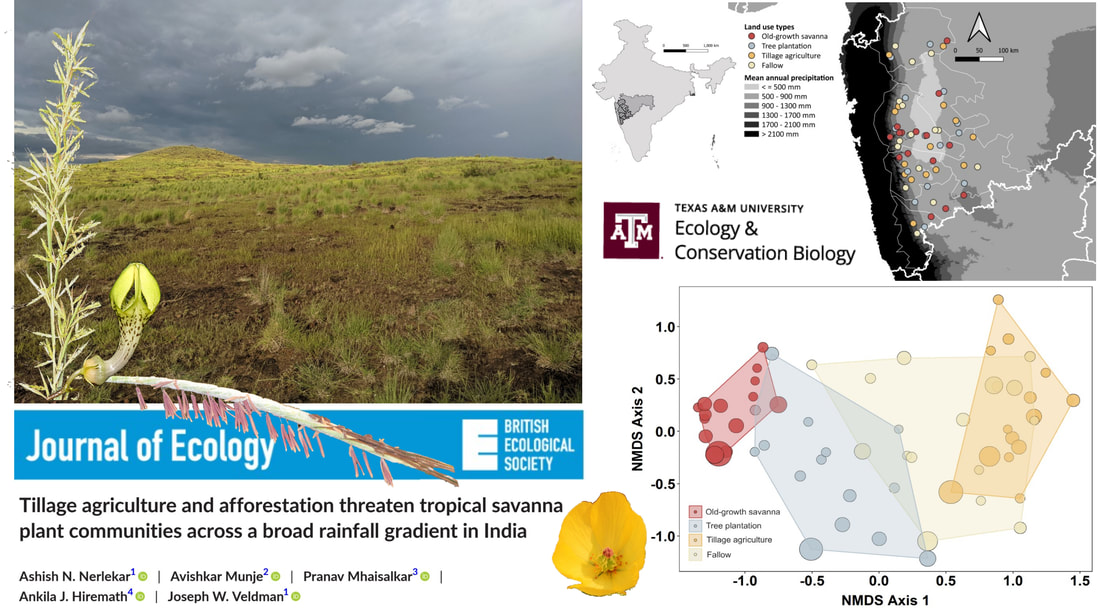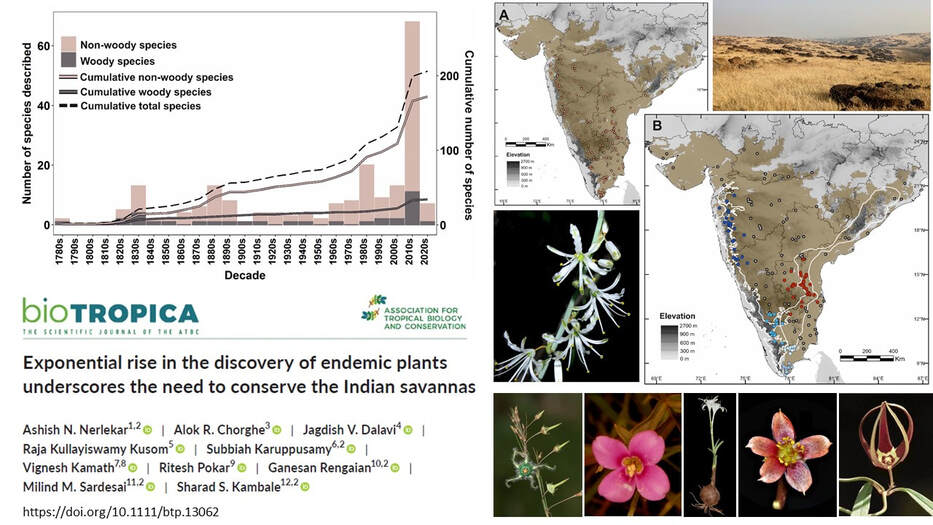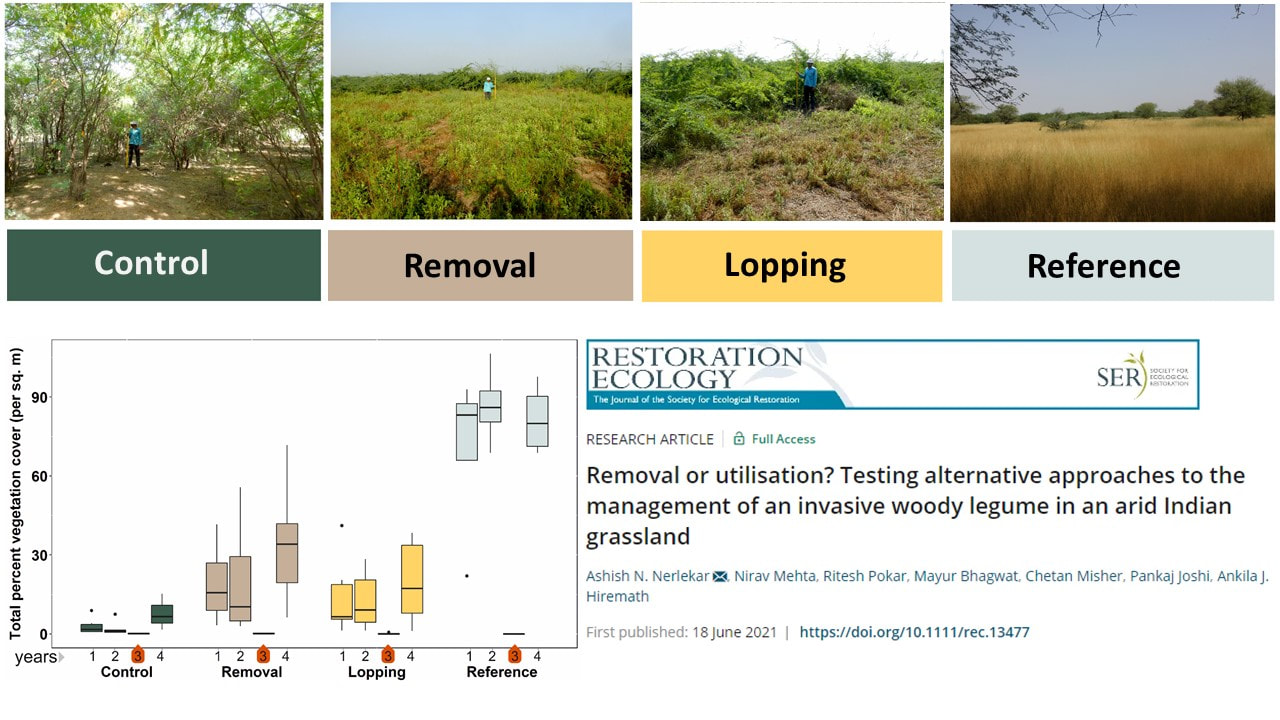Old-growth savannas take centuries to recover once destroyed:
|
|
Consequences of tillage agriculture and tree-plantation on India's native savanna biodiversity:
Biodiverse savannas of western Maharashtra--a hotspot for the discovery of endemic plants--are fast being transformed to alternate land-uses. What this means for native plant biodiversity and composition is less clear, and my second PhD chapter sheds more light on this. |
|
Botanists are discovering tons of new plant species from the Indian savannas—landscapes long labelled as ‘wastelands’!
Tropical rainforests are readily appreciated to house hidden biodiversity treasures and the description of species new to science in these regions is hardly news. The same perception is not held for open ecosystems. For example, counter to perception, savannas in India have recently been shown to house numerous plant species new to science. To understand why this is a surprise, a short tour of history is useful. During British rule in India, land was classified for its utility based on timber productivity. Consequently, naturally open ecosystems like grasslands and savannas were classified as unproductive wastelands. Fast forward to decades post-independence, and little has changed where Indian savannas are still devalued relative to forests and are considered degraded forests. A key assumption behind this devaluation in India of open ecosystems is the supposed lack of plants endemic to them. Recently, this assumption was tested by meticulously sifting through sources to look for plants restricted to Indian savannas. Contrary to assumed wisdom, Indian savannas contain 206 different endemic plant species with 43% of these described in just the last two decades. These new species are primarily being described from the eastern edge of the Western-Ghats Mountains and the Eastern-Ghats Mountains. Clearly, re-considering open ecosystems in India and elsewhere based on assumptions that can be traced back through a history of ecosystem exploitation is required for navigating the biodiversity crisis for the sake of people and planet. Indian savannas are now recognized as ancient ecosystems with numerous endemic species, where species discovery is on the cards. Sadly, open ecosystems are rapidly being lost in these regions via misplaced afforestation policies and other land use interventions. Scientists and policymakers must move away from outdated colonial-era approaches of nature conservation and embrace an inclusive approach that recognizes the intrinsic value of all ecosystems. To read more, see:https://onlinelibrary.wiley.com/doi/full/10.1111/btp.13062 |
|
Restoring a woody plant encroached tropical grassland:
Woody plant encroachment is rapidly transforming the world's grasslands in complex ways. While we have a fair understanding of ways to manage woody encroachment in the temperate savannas and grasslands, we know very little about ways to effectively manage woody-encroached tropical grasslands. In Banni grasslands in India, which are encroached by the invasive Prosopis juliflora, we test the efficacies of two Prosopis management methods—mechanical removal and lopping—to restore native grasslands. We found native herbaceous plant richness and cover to be three-fold and six-fold higher, respectively, in the mechanical-removal treatment compared to the control, but found no significant differences between the lopping treatment and the control. While mechanical-removal increased plant diversity, neither management treatment changed the species composition. Our data highlight the efficacy of mechanical removal over lopping in restoring native grasslands. However, since Prosopis also has benefits varying with stakeholder groups, its removal involves complex trade-offs. Until we fully understand the trade-offs involved, it may be better to manage Banni as a mosaic of restored grassland and Prosopis-woodland. Check out our article here. |
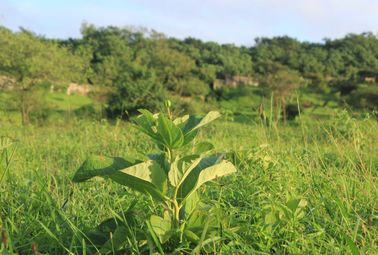 Jatropha nana in its habitat- the Pune hill savannas
Jatropha nana in its habitat- the Pune hill savannas
Ecology and conservation of Jatropha nana:
For my masters thesis, I worked on the ecology of a threatened endemic savanna plant- Jatropha nana, whose largest population is found in and around Pune city.
One part of my work looked at how Jatropha nana density affects the insect-herbivore community across seasons. This involved testing the predictions of the landmark 'resource concentration hypothesis' on this plant system. By providing empirical evidence from a tropical wild system, this work has contributed in bridging an important knowledge gap. Recently published article here!
Along with this, I also worked on the conservation of this species and the urban- savanna landscape in general. An IUCN Red List assessment for this species was lacking in spite of some regional reports suggesting that this species is threatened. Hence, through primary and secondary data, along with my colleagues, I assessed this species as 'vulnerable' in the IUCN Red List. A review of the threats for this species indicates that plantation activities is one of the major reasons for its population decline at Pune hills. This ultimately motivated me to think about the larger picture- understanding the ecological history of these hills, and communicating the importance of savannas in the city to the citizens.
Check out the IUCN assessment here and popular media coverage here. Also check out my recently published popular article about the ecological history of the Pune hills here !
For my masters thesis, I worked on the ecology of a threatened endemic savanna plant- Jatropha nana, whose largest population is found in and around Pune city.
One part of my work looked at how Jatropha nana density affects the insect-herbivore community across seasons. This involved testing the predictions of the landmark 'resource concentration hypothesis' on this plant system. By providing empirical evidence from a tropical wild system, this work has contributed in bridging an important knowledge gap. Recently published article here!
Along with this, I also worked on the conservation of this species and the urban- savanna landscape in general. An IUCN Red List assessment for this species was lacking in spite of some regional reports suggesting that this species is threatened. Hence, through primary and secondary data, along with my colleagues, I assessed this species as 'vulnerable' in the IUCN Red List. A review of the threats for this species indicates that plantation activities is one of the major reasons for its population decline at Pune hills. This ultimately motivated me to think about the larger picture- understanding the ecological history of these hills, and communicating the importance of savannas in the city to the citizens.
Check out the IUCN assessment here and popular media coverage here. Also check out my recently published popular article about the ecological history of the Pune hills here !
